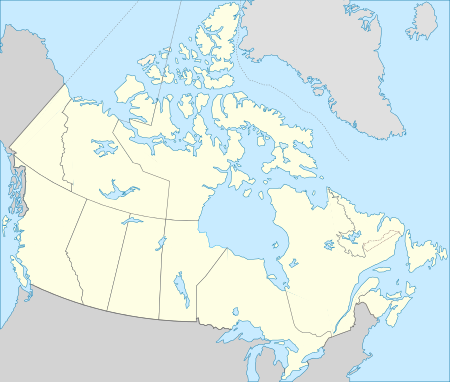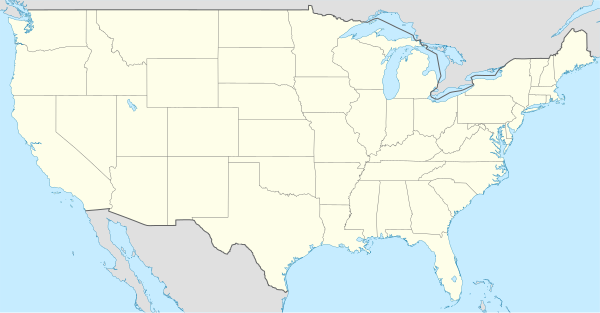North American English
| North American English | |
|---|---|
| Region | Northern America (United States, Canada) |
Indo-European
| |
Early forms | |
| Dialects | American English, Canadian English and their subdivisions |
| Latin (English alphabet) Unified English Braille[1] | |
| Language codes | |
| ISO 639-3 | – |
| Glottolog | nort3314 |
| IETF | en-021 |
North American English (NAmE, NAE) is the most generalized variety of the English language as spoken in the United States and Canada.[2] Because of their related histories and cultures,[3] plus the similarities between the pronunciations (accents), vocabulary, and grammar of American English and Canadian English, the two spoken varieties are often grouped together under a single category.[4][5] Canadians are generally tolerant of both British and American spellings, with British spellings of certain words (e.g., colour) being favored in more formal settings and in Canadian print media; for some other words the American spelling prevails over the British (e.g., tire rather than tyre).[6]
The United Empire Loyalists who fled the American Revolution (1775–1783) have had a large influence on Canadian English from its early roots.[7] Some terms in North American English are used almost exclusively in Canada and the United States (for example, the terms diaper and gasoline are widely used instead of nappy and petrol). Although many English speakers from outside North America regard those terms as distinct Americanisms, they are just as common in Canada, mainly due to the effects of heavy cross-border trade and cultural penetration by the American mass media.[8][better source needed]The list of divergent words becomes longer if considering regional Canadian dialects, especially as spoken in the Atlantic provinces and parts of Vancouver Island where significant pockets of British culture still remain.
There are a considerable number of different accents within the regions of both the United States and Canada. English in North America originally derived from the accents prevalent in different English, Scottish and Irish regions of the British Isles. These were developed, built upon, and blended together as new waves of immigration, and migration across the North American continent, developed new accents and dialects in new areas, and as these ways of speaking merged and assimilated with the English-speaking population.
Dialects[]

ATLANTIC CANADIAN
| |

INLAND NORTHERN
WPA
New
Orleans | |
| The maps above shows the American and Canadian English's major regional dialects (in all caps), plus smaller and more local dialects, as demarcated primarily by William Labov et al.'s The Atlas of North American English,[9] as well as the related Telsur Project's regional maps. Many regions also contain speakers of a "General American" accent that resists the marked features of their region. Furthermore, this map does not account for speakers of ethnic or racial dialects. | |
American English[]
- General American
Ethnic American English
- African-American English
- American Indian English
- Cajun English
- Chicano English
- Miami Latino English
- New York Latino English
- Pennsylvania Dutch English
- Yeshiva English
Regional American English
- Mid-Atlantic American English
- Baltimore English
- Philadelphia English
- Midland American English
- New York City English
- Northern American English
- Inland Northern American ("Chicago") English
- New England English
- Eastern New England English
- Boston English
- Maine English
- Western New England English
- Eastern New England English
- North-Central American ("Upper Midwest") English
- Upper Peninsula ("Yooper") English
- Southern American English
- Appalachian English
- High Tider English
- New Orleans English
- Older Southern American English
- Texan English
- Western American English
- California English
- New Mexican English
- Pacific Northwest English
- Western Pennsylvania ("Pittsburgh") English
Canadian English[]
- Aboriginal Canadian English
- Atlantic Canadian English
- Ottawa Valley English
- Quebec English
- Standard Canadian English
Table of accents[]
Below, thirteen major North American English accents are defined by particular characteristics:
| Accent name | Most populous urban center | Strong /aʊ/ fronting | Strong /oʊ/ fronting | Strong /u/ fronting | Strong /ɑr/ fronting |
Cot–caught merger | Pin–pen merger | /æ/ raising system | Other defining criteria[10] |
|---|---|---|---|---|---|---|---|---|---|
| African-American | Variable | No | No | No | Mixed | Yes[11] | pre-nasal | Southern drawl / African-American Vowel Shift / Variable non-rhoticity | |
| Atlantic Canadian | Halifax | Variable | No | Yes | Yes | Yes | No | various | Canadian raising |
| General American | No | No | No | No | Mixed | No | pre-nasal | ||
| Inland Northern U.S. | Chicago | No | No | No | Yes | No | No | general | Northern Cities Vowel Shift |
| Mid-Atlantic U.S. | Philadelphia | Yes | Yes | Yes | No | No | No | split | |
| Midland U.S. | Indianapolis | Yes | Yes | Yes | No | Mixed | Mixed | pre-nasal | |
| New York City | New York City | Yes | No | No[12] | No | No | No | split | Variable non-rhoticity |
| North-Central (Upper Midwestern) U.S. | Minneapolis | No | No | No | Yes | Yes | No | pre-nasal & pre-velar | |
| Northern New England | Boston | No | No | No | Yes | Yes | No | pre-nasal | |
| Southern U.S. | San Antonio | Yes | Yes | Yes | No | Mixed | Yes | pre-nasal | Southern drawl / Southern Vowel Shift |
| Standard Canadian | Toronto | No | No | Yes | No | Yes | No | pre-nasal & pre-velar | Canadian raising / Canadian Vowel Shift |
| Western U.S. | Los Angeles | No | No | Yes | No | Yes | No | pre-nasal | |
| Western Pennsylvania | Pittsburgh | Yes | Yes | Yes | No | Yes | Mixed | pre-nasal | /aʊ/ glide weakening |
Phonology[]
A majority of North American English (for example, in contrast to British English) includes phonological features that concern consonants, such as rhoticity (full pronunciation of all /r/ sounds), conditioned T-glottalization (with satin pronounced [ˈsæʔn̩], not [ˈsætn̩]), T- and D-flapping (with metal and medal pronounced the same, as [ˈmɛɾɫ̩]), L-velarization (with filling pronounced [ˈfɪɫɪŋ], not [ˈfɪlɪŋ]), as well as features that concern vowel sounds, such as various vowel mergers before /r/ (so that, Mary, marry, and merry are all commonly pronounced the same), raising of pre-voiceless /aɪ/ (with price and bright using a higher vowel sound than prize and bride), the weak vowel merger (with affected and effected often pronounced the same), at least one of the LOT vowel mergers (the LOT–PALM merger is completed among virtually all Americans and the LOT–THOUGHT merger among nearly half, while both are completed among virtually all Canadians), and yod-dropping (with tuesday pronounced /ˈtuzdeɪ/, not /ˈtjuzdeɪ/). The last item is more advanced in American English than Canadian English.
See also[]
- North American English regional phonology
- Comparison of American and British English
- American English
- Belizean English
- Canadian English,
- Caribbean English
- List of American words not widely used in the United Kingdom
- List of words having different meanings in British and American English
- Regional accents of English
- Commonwealth English
References[]
- ^ "Unified English Braille (UEB)". Braille Authority of North America (BANA). 2 November 2016. Retrieved 2 January 2017.
- ^ Glossary of Grammatical and Rhetorical Terms
- ^ Chambers, J.K. (1998). "Canadian English: 250 Years in the Making". The Canadian Oxford Dictionary (2nd ed.). p. xi.
- ^ Labov, Ash & Boberg (2006)
- ^ Trudgill, Peter & Jean Hannah. (2002). International English: A Guide to the Varieties of Standard English, 4th. London: Arnold. ISBN 0-340-80834-9 .
- ^ Patti Tasko. (2004). The Canadian Press Stylebook: A Guide for Writers and Editors, 13th. Toronto: The Canadian Press. ISBN 0-920009-32-8, p. 308.
- ^ M.H. Scargill. (1957). "Sources of Canadian English", The Journal of English and Germanic Philology, 56.4, pp. 610-614.
- ^ John Woitkowitz (2012). "Arctic Sovereignty and the Cold War: Asymmetry, Interdependence, and Ambiguity". Retrieved 2012-03-13.
- ^ Labov, Ash & Boberg (2006:148)
- ^ Labov, Ash & Boberg (2006:146)
- ^ Labov (1972), p. 19.
- ^ Labov, Ash & Boberg (2006:101, 103)
Bibliography[]
- Chambers, J.K. (1998). "Canadian English: 250 Years in the Making," in The Canadian Oxford Dictionary, 2nd ed., p. xi.
- Clark, Joe (2008). Organizing Our Marvellous Neighbours: How to Feel Good About Canadian English (e-book). ISBN 978-0-9809525-0-6.
- Labov, William; Ash, Sharon; Boberg, Charles (2006), The Atlas of North American English, Berlin: Mouton-de Gruyter, ISBN 3-11-016746-8
External links[]
- North American English
- 18th-century establishments in North America
- Languages attested from the 18th century
- Dialects of English